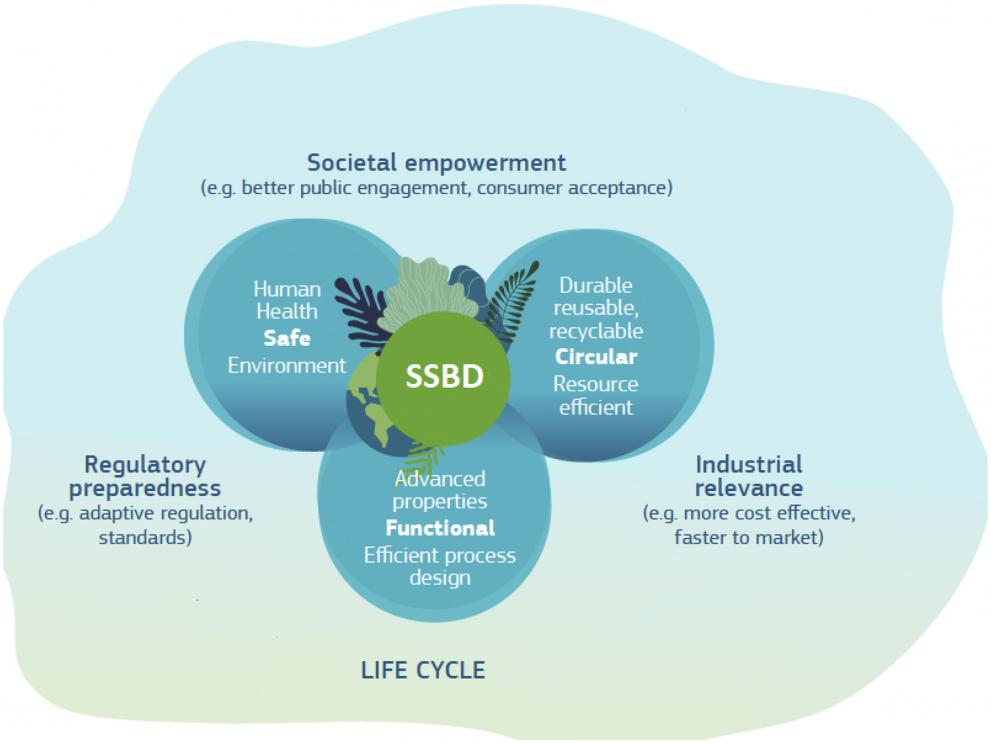
The JRC and DG Research & Innovation promote for the very first time the concept of 'Safe- and Sustainable-by-Design' in nanotechnology in order to support key European policy goals: the Green Deal, the Circular Economy and the Chemicals Strategy for Sustainability.
Materials and products should be safe for humans and the environment and fit for a climate-neutral, circular and resource efficient economy. At the same time, they should have optimal properties and functionality through their life cycle.
The JRC and DG Research & Innovation published the first scientific article that calls on innovators, scientists and authorities to further develop and promote 'Safe-and-Sustainable-by-Design' as a new concept towards safe and sustainable innovation in nanotechnology.
The example of smart nanomaterials
Nanotechnology is a key enabling technology and has great potential for addressing societal challenges including energy supply and health care.
Nanomaterials are chemicals or materials consisting of particles with very small sizes in the nanometre range. One nanometre fits a billion times in a metre.
Significant advancements have been made over the last decade in understanding the environmental and toxicological behaviour of nanomaterials.
However, some questions concerning their safety and sustainability remain open. This is especially true for advanced nanomaterials, due to their complexity and dynamic behaviour.
The article reviews the state of play for safe innovation for a specific group of advanced nanomaterials, called "smart nanomaterials".
These advanced nanomaterials actively respond to external stimuli, such as changes in temperature, pH, light or chemical environment. We find them in food, food packaging, cosmetics and agriculture.
“Our review shows that existing regulatory frameworks are not fully prepared to address such challenges”, explain the authors. “There is a need to further develop a safe and sustainable approach at the design stage of product development in nanotechnology in order to reduce the risk those nanomaterials could pose to human health and the environment.”

Achieving key European policy goals
Making smart nanomaterials safe and sustainable at the design stage of product development is a pivotal concept to achieve key European policy goals: the Green Deal, the Circular Economy and the Chemicals Strategy for Sustainability.
The ‘Safe- and Sustainable-by-Design’ concept proposed in the article takes a systems approach by integrating safety, circularity and functionality of advanced nanomaterials throughout their life cycle as a way forward to contribute to a sustainable, fair and inclusive European Union's economy.
Related Content
Article: Towards safe and sustainable innovation in nanotechnology: State-of-play for smart nanomaterials
Details
- Publication date
- 19 April 2021
